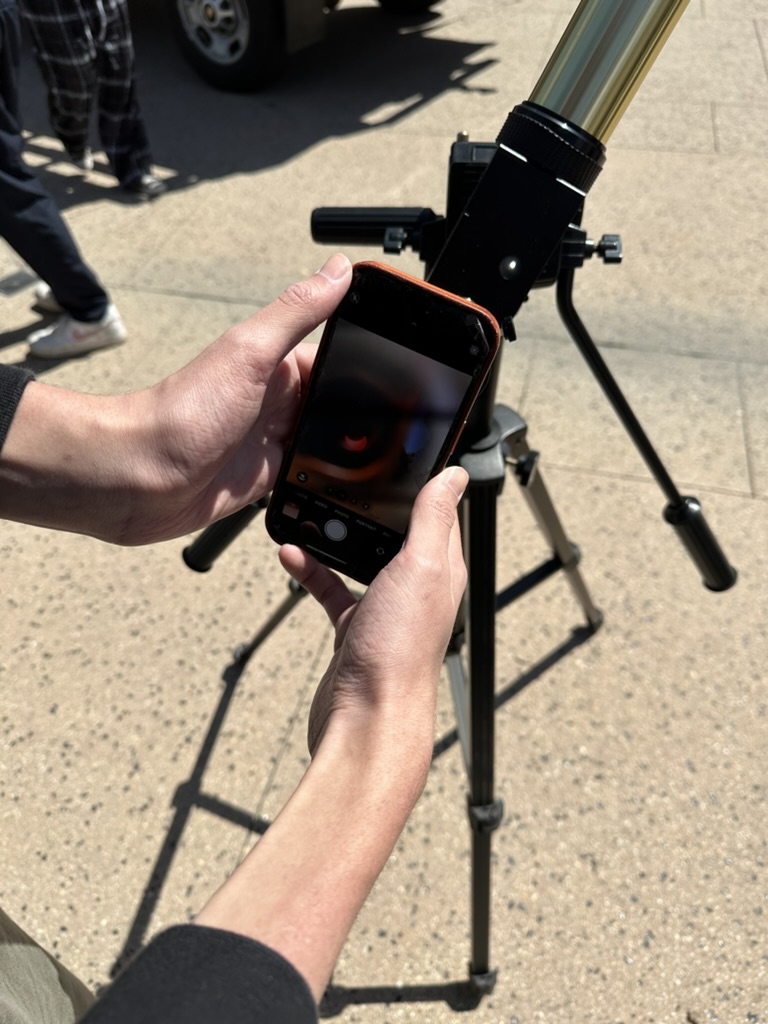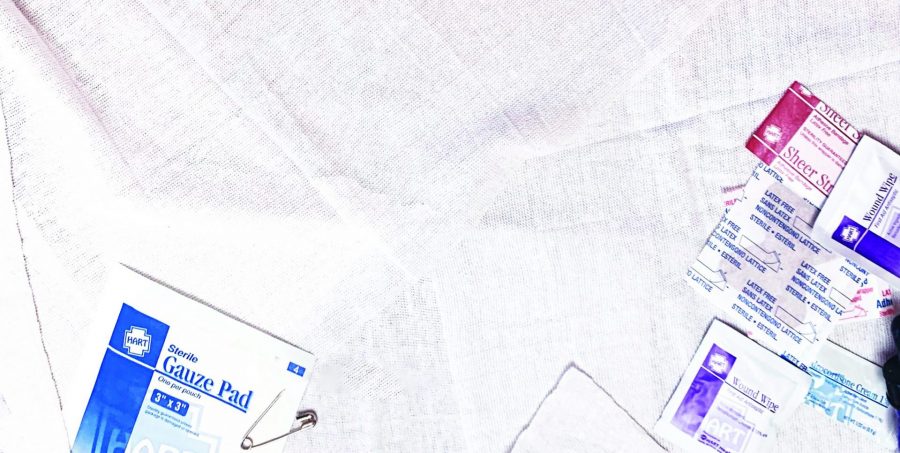When the buzzing of the tattoo gun finally left his ears, Matthew Berg ’19 glanced down at his newly completed sleeve, which he spent two years designing, marveling at the way the tattooed serpent seemed to bite into his vein.
“I was really nervous,” Berg said. “Sleeves are pretty intense, and I had to get it done in parts. At the end, it was definitely worth it. I earned my sleeve, and I’m really proud of it.”
Inked sleeves are large collections of smaller tattoos typically linked by a common theme, and usually cover arms or legs. Ever since his sophomore year, Berg has spent hundreds of hours designing his sleeve, drawing inspiration from his friends, family and works of art.
“My sleeve’s meaning is derived from three different main bodies of work—Gustave Dore’s [‘The Destruction of Leviathan’], the classic Fellini film ‘La Dolce Vita,’ as well as some Fear and ‘Loathing in Las Vegas,’” Berg said. “My piece is about existentialism. I’m both my own enemy but also my greatest motivator. As a filmmaker, I try to tell stories that have meaning to me and express my worldview. I warned my family beforehand and asked my friends’ opinions on what the artwork should look like, but ultimately, it was my own creative work.”
According to a 2017 Statista survey on tattoos and body modifications, tattoos are often viewed as a symbol of coming-of-age, with the majority of tattoo recipients being teenagers and young adults. 39 percent of surveyed individuals with one or more tattoos received their first when they were 18 or younger.
Recently, younger teenagers who seek more convenient, cost-effective and accessible alternatives to traditional tattoo work have begun to use “stick-and-pokes,” a do-it-yourself tattoo style that involves dipping a needle into ink and using it to puncture dots into skin.
Over the last few years, stick-and-pokes have gained popularity because of the intimacy involved with the procedure, as well as the unique aesthetic that they offer. Stick-and-pokes are typically smaller, simpler and more delicate than traditional tattoos.
Stick-and-poke tattoos are created entirely by hand, allowing those who receive them to spend more time and have more meaningful conversations with their tattoo artists. Because stick-and-pokes are typically done by inexperienced artists, students often receive them from their friends.
Professional hand poke artist Katie Rita said that stick-and-poke tattoos offer a personalized, meaningful experience beyond just body modification.
“I believe people are attracted to the kind of experience that hand-poked tattoo artists offer,” Rita said. “Many tattoo shops have a doctor’s office vibe and a depersonalized feel about them. Hand-poked tattoos often happen in much more intimate settings, allowing people to connect with their tattoo artist and experience the tattoo process in a more meaningful way.”
Raffaella Rubenstein ’21 said that she chose to give herself a stick-and-poke tattoo because she wanted to have control over her tattoo experience and because her parents opposed the idea of her receiving a tattoo.
“I got bored one day, and I wanted to do a tattoo,” Rubenstein said. “My dad has tattoos, and I think they’re really cool. I gave myself a Libra symbol on my ankle. Stick-and-pokes are so much cheaper and it feels more intimate because I did it to myself. My mom is also very against tattoos so she didn’t find out, nor did I need parental consent. It hurt pretty badly, because I did it to myself with a sewing needle and India Ink, but overall it was worth it.”
Like all minors living in California, Berg had to wait until his 18th birthday to get tattooed at a certified parlor, rather than receiving an unauthorized stick-and-poke. According to the California Penal Code 653, anyone under the age of 18 is prohibited from receiving a tattoo, no matter what the circumstances may be.
Many teenagers, including Kai McGrath ’21, also plan to get tattoos in the future. According to a 2018 survey conducted by the C.S. Mott Children’s Hospital, 27 percent of parents of teenagers between the ages of 16 and 18 reported that their children had approached them about receiving a tattoo. Yet, nearly 78 percent of parents identified themselves as opposed to the idea of teenage body modification.
“My parents are opposed to all types of body modification,” McGrath said. “I think I might plan on getting a tattoo once I’m legal, but I haven’t thought too much about what I want. What I do know for sure is that it has to be something meaningful to me. I’m not the type of person to just get a random picture because it looks nice.”
Common parental concerns include the potentially negative health effects of bodily modification. The American Academy of Pediatrics (AAP) recommends that pediatricians inform their adolescent patients about the importance of cleanliness and hygiene in piercing and tattoo parlors.
Tattoo artist Brian Keith Thompson said that he strives to keep his customers safe by ensuring that his equipment and studio meet the California standards of sanitation, sterilization and safety.
“I want to leave the studio today the same way I came in—disease free,” Thompson said. “I’m a former Marine, so I am the commanding general [of] inspecting [and upholding] safety.”
However, stick-and-pokes are less sanitary than tattoos performed at traditional parlors. Due to the DIY nature of stick and pokes, health regulations cannot be fully enforced. According to Infectious Diseases Specialist Dr. Celine Gouder, sharing needles between friends increases the likelihood of diseases such as HIV, Hepatitis B and Hepatitis C from spreading.
Joy Calderon ’20 said that, although she was aware of the health risks associated with stick and pokes, she took precautionary steps to make sure her tattoo experience was safe.
“My best friend is an artist, and she’s done them on kids from her school before,” Calderon said. “She used brand new, sterilized products, so I wasn’t worried. I’m not [18], so I can’t get a tattoo [from a certified parlor], but since I’ve always wanted [tattoos], stick-and-pokes were the way to go.”
Because of the lack of legal restrictions imposed on the stick-and-poke industry, teenagers receiving hand poke tattoos are more likely to go overboard with their body modification, according to Adolescent Therapist and Family Psychologist Wes Crenshaw.
“Ink can be addicting. I’ve had numerous well-tatted clients express disappointment at 34 in art they loved at 21,” Crenshaw said. “No matter how perfectly teens follow my suggestions, there’s a good chance they’ll want a change someday. It’s hard at 18 to know what you’ll like at 35, but that has to be your goal.”
In addition to fearing the permanence of tattoos, teenagers said they were hesitant to receive tattoos because they believed body modification would hurt their future job prospects. Human Resource Management Professor Andrew Timmings said that employers’ perception of employees with visible tattoos varies across occupations.
“Sometimes it depends where the tattoo is on the body, and the demographic of customers is key,” Timmings said. “If you are targeting younger customers who may have tattoos themselves, there is usually no problem, but if you are targeting older customers, you may still be told to cover up.
Despite the decreasing stigma surrounding body modifications in the workplace, Daniel Ju ’22 said that he is still hesitant to receive tattoos.
“I feel that tattoos are a cool way to tell your personal story, and I respect people that get tattoos, because it’s their body and their choice,” Ju said. “But, I feel that having visible tattoos could possibly make your future employers look negatively towards you. Even though tattoos are extremely common these days, I feel that they are not associated with the characteristics that most employers are looking for.”
Thompson said that although he also encourages self-expression in the form of tattoos and piercings, he believes that body modification is a monumental decision that should be carefully considered. He said that he often counsels his younger customers against spur-of-the-moment decisions, warning them about the long -term impact of their choices.
“I’ll tell them, ‘no, you’re 19, you should wait,’” Thompson said. “[I tell them to] stay away from the face. We call that the job stopper; if you don’t want to get employed, tattoo your face.”





































